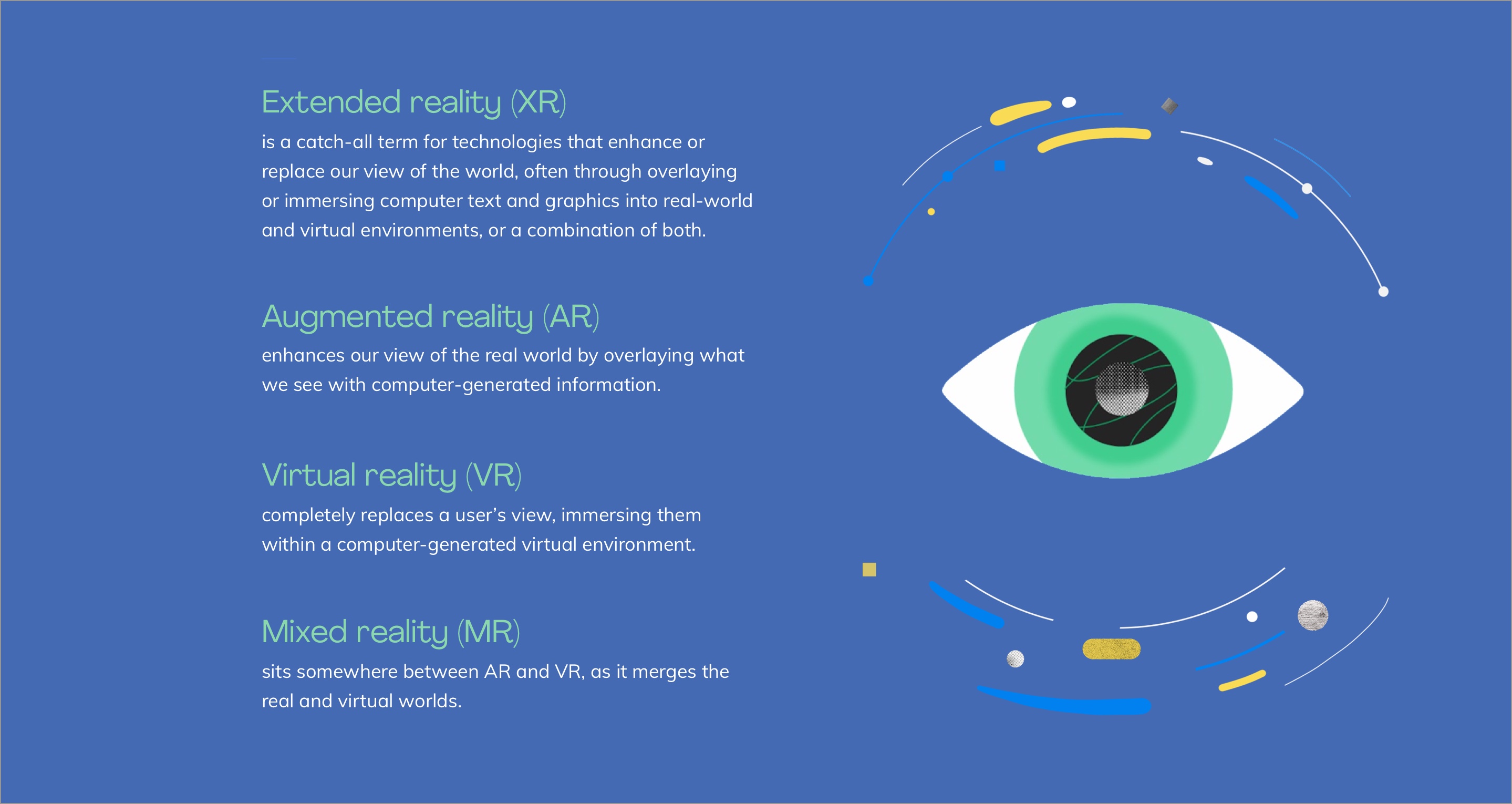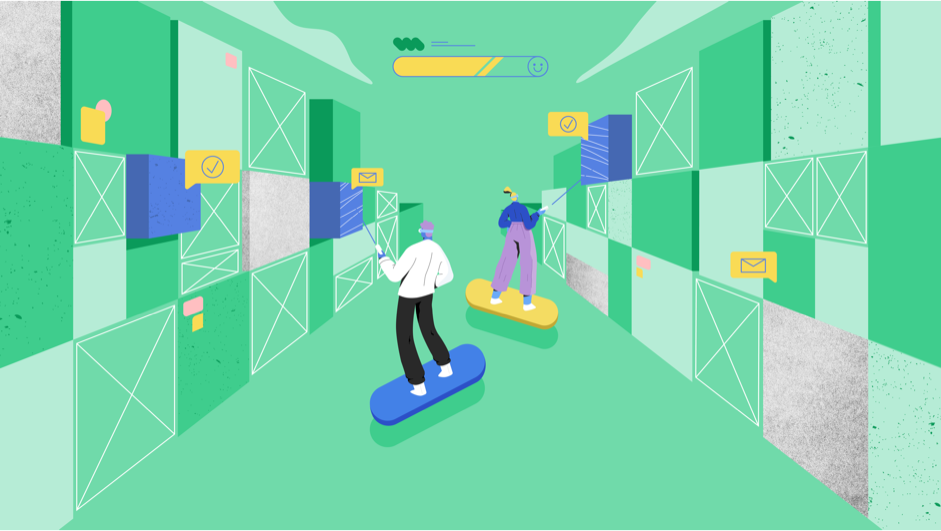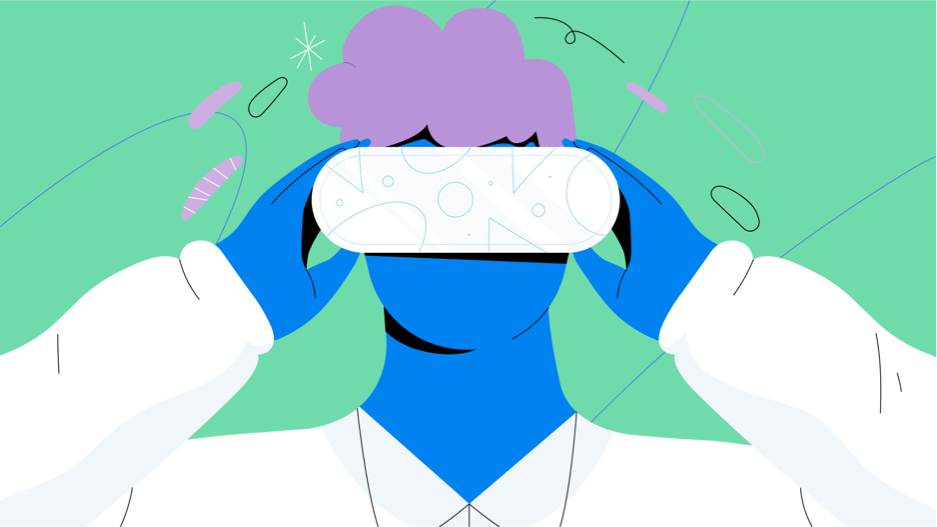The Future of Learning Is Immersive
Get a glimpse of how education and workforce training are being reimagined through 5G and extended-reality technologies in the second installment in this series co-created by Ericsson and Bloomberg Media Studios.
When Strivr cofounder and CEO Derek Belch launched his virtual-reality platform in 2015, the former college football player’s goal was to give quarterbacks a safe way to run drills without having to step foot on the field. In months, the technology was being used by more than 20 NFL and NBA teams, several college teams and the U.S. Ski Team.
By 2016, Wal-Mart began a pilot of the program in its training facilities, and soon after rolled it out out nationally, equipping 1 million workers with Strivr’s VR headsets to give them real-world practice for everything from fulfilling orders to assisting customers. Not long after that, Strivr expanded its client base to other Fortune 500 companies.
“We’re giving employees a ‘learning by doing’ experience,” Belch says. “VR is like a flight simulator for employees, from entry-level to CEO—and everybody in between.”
Immersive learning—experiential training that uses digital technologies like VR and AR that simulate real-world scenarios—is arguably the biggest breakthrough in education in decades. With the widening adoption of 5G, these technologies are expected to present limitless possibilities for learning of all kinds, from kindergarten to higher education to workforce training.

The future is “learning by doing”
Today, most learning takes place in traditional classroom settings, where students and workers sit in physical rooms, either listening to a lecturer, reading books or watching a video. But that way of learning is largely ineffective: Various research shows that people forget half of what they learn in an hour and forget 70% in 24 hours, and 90% within a month.
This is particularly troubling for businesses, many of which face a significant skills gap as automation continues to change nearly every job. This has created an urgent need to reskill and upskill the workforce; a 2022 McKinsey survey on the future workforce showed that nearly nine in 10 business leaders said their organizations already face skill gaps or expect gaps to develop within the next five years.


Immersive learning is key to the future of workforce training and education in general. This model is designed to boost student engagement and knowledge retention by creating simulated environments that are as close to the real world as you can get. The theory? Active learning leads to better performance.
5G will be vital to that experience, as its superior speed, bandwidth and response time give it a big advantage over Wi-Fi and its predecessor, 4G. All this is needed to digitally simulate a real-world experience in real time, and to guard against so-called VR motion sickness, which occurs when your brain thinks you are moving, but your body is static. “These simulations have to mimic what we see, feel and hear in the real world,” Belch says. “The real world doesn’t pause when we move from one place to another. If VR pauses, even for a fraction of a second, there’s a risk that it could make somebody nauseous.”
Belch says that 5G also will be essential as these experiences move beyond devices. “Eventually, we’re going to need the ability to stream and pull from the cloud for these experiences,” he says. “When that happens, 5G will be critical to ensure a perfect user experience.”
Is this real?
Companies are beginning to recognize the promise of immersive learning. Ericsson’s Every Place Has a Story, or EPHAS, started off as a location-bound AR platform that utilizes 5G, edge computing and geotracking to share historical events. It is being used in several learning settings, including museums where virtual dinosaurs are brought to life.
EPHAS is also used to help businesses train employees. For example, the Volvo Group, in Köping, Sweden, is using it to train workers at its smart factory. Henrik Söderlund, founder of EPHAS, says the technology uses assets including photos, 3D models and audio, to tell factory workers a visual “training story.”
What’s next for EPHAS in the next five to 10 years? “Imagine you’re getting training on the newest model in a car repair shop, and the story is so realistic that you can almost smell the oil, see the nuts and bolts and feel like you’re touching the equipment,” Söderlund says. “That’s the future of training.”
For that to happen, Söderlund says that 5G will be needed to create realistic experiences, and that a lag of only milliseconds can make a big difference in how our minds perceive mixed reality.
“In the near future, you’ll be able to have an AR experience that is so realistic that you can barely distinguish what is real and what is not real,” he says. “But in order to deliver such an experience, you need really low latency and a fast connection, otherwise the human brain will understand that it is not real.”

The evolution of learning starts with connectivity
Universal access to meaningful connectivity is essential to ensure sustainable and equitable life-long learning for all. Ericsson is committed to leveraging Information and Communication Technology to enable access to quality education—whether in classroom or hybrid—as well as developing digital skills to prepare students of all ages for a 5G future. One example in practice is Ericsson's partnership with UNICEF to help map school connectivity in 35 countries—a critical first step toward providing every child with access to digital learning opportunities. This joint effort is part of Giga, an initiative launched in 2019 by UNICEF and the International Telecommunication Union (ITU) to connect every school to the internet.
“Ericsson has been connecting schools, students and teachers for over a decade. We’re now using this experience to contribute to Giga’s ambitious goals. Looking ahead, it's exciting to see how we can help shape and inspire the future of immersive learning.” says Heather Johnson, Vice President and Head of Sustainability and Corporate Responsibility at Ericsson.

Belch says it’s inevitable that the future of learning will be immersive. Strivr has already standardized VR-based learning to help organizations improve how they onboard, train and boost employee performance in areas including customer service, health & safety, and even soft skills. As employers prioritize strategies to both attract and retain talent, they're looking to invest further in career development. “VR and other technologies are going to be everywhere when it comes to learning and development of all kinds, from enterprises to schools, from kindergartners up through post-graduate education,” he says. “But for VR and AR to be successful at scale—in the workplace, in education, for consumers—we’re going to need bandwidth and connectivity. And that is where 5G comes in; it’s the glue that holds all of this together.”
Looking even further into the future, Belch says that 5G will also aid the next stage of immersive learning: where VR meets the metaverse, and learners can interact with realistic avatars of one another. “I think we will reach a point where there will be thousands of miles separating individuals, but technology will allow them to feel as if they are in the same room,” says Belch.
